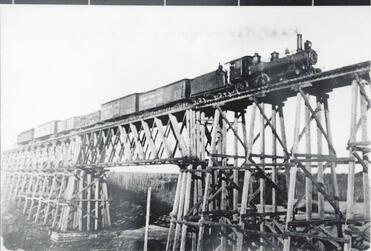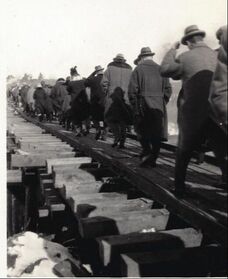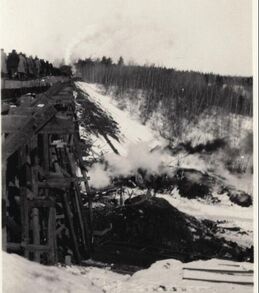 Bridge built of hard pine in 1893. S&A Engine #5 is pulling a train across it around 1910.
Bridge built of hard pine in 1893. S&A Engine #5 is pulling a train across it around 1910. In the days of World War I, many independent railway branch lines in New Brunswick had insufficient revenues and, consequently, struggled to survive.
| Pressure was put on the Federal Government to take over the lines. In 1918, the lines were merged with the former Intercolonial Railway, already a government operation. The Canadian Government Railways (CGR) soon realized that the branches had not been maintained, including the one between Salisbury and Albert. The CGR inspectors determined that the wooden bridge at Turtle Creek on this branch was unsafe and needed to be replaced. To allow operations to continue until the bridge could be replaced, a plan was devised to protect users from injury should the bridge collapse under a train. The plan called for the train to stop at the approach to the bridge. All the passengers would get off the train while one of the two engine crew members walked across the bridge and waited at the far end. The other crew member then put the train in slow motion and got off. The driverless train slowly crossed the bridge to where the first crew member was waiting. He got on board as it rolled by and stopped the train. The passengers and the rest of the crew then walked across the bridge and re-boarded the train. No information has come to light about the reactions of the people involved. The bridge was 535 feet long and 68 feet high. It must have been a scary prospect for some and cold in the winter. | |



 RSS Feed
RSS Feed